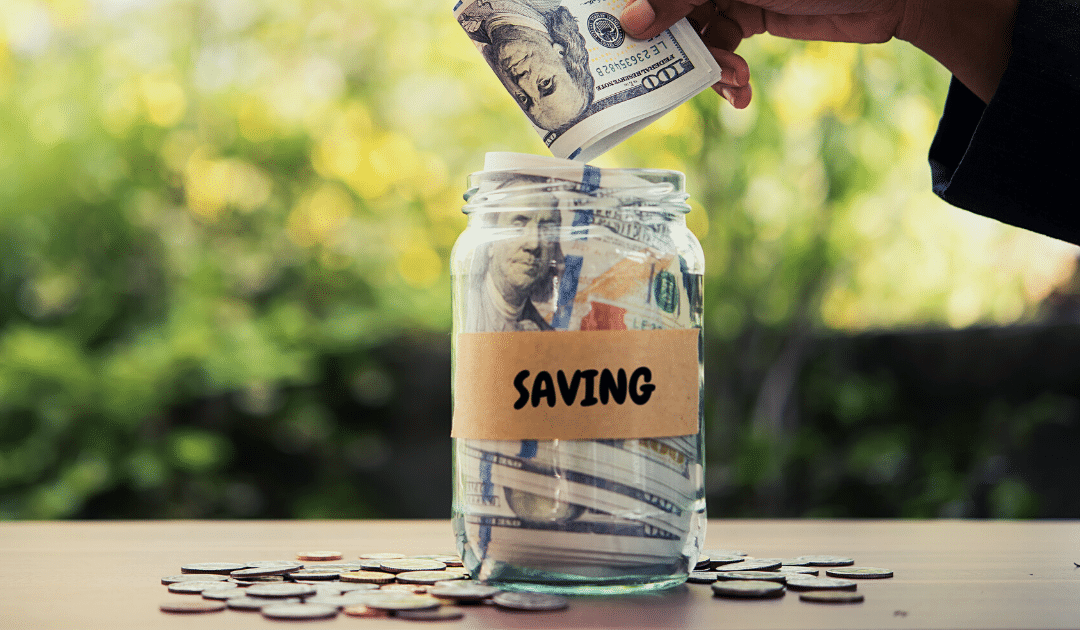
by California Casualty | Finances, Good to Know |
Was one of your New Year’s resolutions to start saving money, or to start spending a little more wisely? The best way to save money for you and your family’s future is to create a budget.
Most people cringe at the thought of sitting down and going over their finances, but budgeting doesn’t have to be scary. Even if you think you are in good financial standing you may be shocked when you sit down and go through the numbers. A budget will help you monitor your flow of money and get rid of unnecessary spending, saving you money each month, so what’s there to lose?
Here are 7 easy steps to begin setting your budget.
Step 1. Sit Down Together
Get together with your significant other to calculate the total amount of money you each have coming in each month. From there you will be able to more accurately know where you can cut spending and start saving.
Step 2. Find Out Your Essential Spending Costs
When you begin to sit through and work out your family’s budget, it’s important to start by writing out all of the essential spending your family does each month. This will include payments for your mortgage, rent, bills, insurance, auto loans, student loans, schooling, daycare, food, prescriptions, and essential groceries and clothing.
Step 3. Find Out Your Non-Essential Spending Costs
Next, you will write all costs that may not be essential, but you would like to keep putting money towards them each month. If you have any non-essential spending that you don’t use anymore this would be a good time to start cutting that spending out to help you save. Non-essential monthly spending could include just about anything, like streaming services- Netflix, Hulu, Spotify, or Disney +, etc., subscription and other services like Amazon Prime, Adobe Creative Suite, Dollar Shave Club, Stitch Fix, etc. It could also include any club or gym memberships, extracurriculars, etc.
Step 4. Set Aside Extra Cash to Pay off Debts
By paying off your debts more quickly you can get yourself in better financial standing for the future. To do this start, use the money that is left that you have calculated from your essential and non-essential spending, and start by paying a little above the average monthly payment on your credit cards. Do this every month until you get the balance low enough to completely pay them off. It doesn’t have to be much, a few extra dollars here and there will still get you closer to paying debt off than the minimum payment. You can also do this with your other loans, like your car or home, as well. You can either do this with multiple debts or choose one debt to pay off at a time; it depends on you and your preference and financial situation.
Step 5. Set a Limit for Extra Spending
Setting Limits may be hard at first, but when you sit down and calculate your average cost at the grocery store or your weekly retail therapy, you may find out that you are overspending. Set a reasonable limit for yourself when you go shopping, one that fits into your budget, and stick to it. Bye overspending.
Step 6. Leave Yourself Some Room
A common mistake in budgeting is not leaving room for events that take place throughout the year like, Holidays, Birthdays, Weddings, Back to School, Baby Showers, etc. If you have an event coming up, know to keep a little bit of extra money out to put it towards. Even if the event is your family going out to eat once a month, remember to leave yourself some room. One of the best ways to do this without overspending is to take out a cash deposit and put it in an envelope to use on that date. That way it is out of your account, you have a spending limit, and the rest can go towards your savings.
Step 7. Determine How Much You Can Save
Once you have all of your spending calculated, you can then determine how much you can save each month. Assuming that some of your payment already goes into your 401k, it’s important to also contribute a personal savings account every month or every paycheck. Think of your personal savings account as a nest-egg for you and your family in case of emergencies. It is wise to contribute enough money into this account until you have reached an amount that could support your family’s essential needs for at least 6 months. Do not pull out of this account.
If you would like to start a savings account that you want to attribute money towards each month for additional life events like college, home-ownership, your own wedding, engagement rings, renovations, family trips, vacations, etc. open a new account, a new one that doesn’t include the nest-egg savings you have built, and start contributing what you can until you have reached your goal.
BONUS TIP: Track Your Spending
To stay on track is to monitor your spending. You should track every dollar moving in and out of your account. There are hundreds of budgeting apps that can help you, or you could just make it a point to look at your online banking at the end of each day. Tracking all of the cash flow in real-time will help you cut out costs that aren’t necessary or that you may not use as often as you think you do. This will also help you monitor your account for any suspicious purchases or accidental charges.
Budgeting doesn’t have to be scary, and if you get the math wrong on your first month that’s okay. Fix some spending/saving and try again, and don’t be afraid to make adjustments where they are needed. It’s your money, find whatever works for you and your family.
Happy budgeting!
This article is furnished by California Casualty, providing auto and home insurance to educators, law enforcement officers, firefighters, and nurses. Get a quote at 1.866.704.8614 or www.calcas.com.
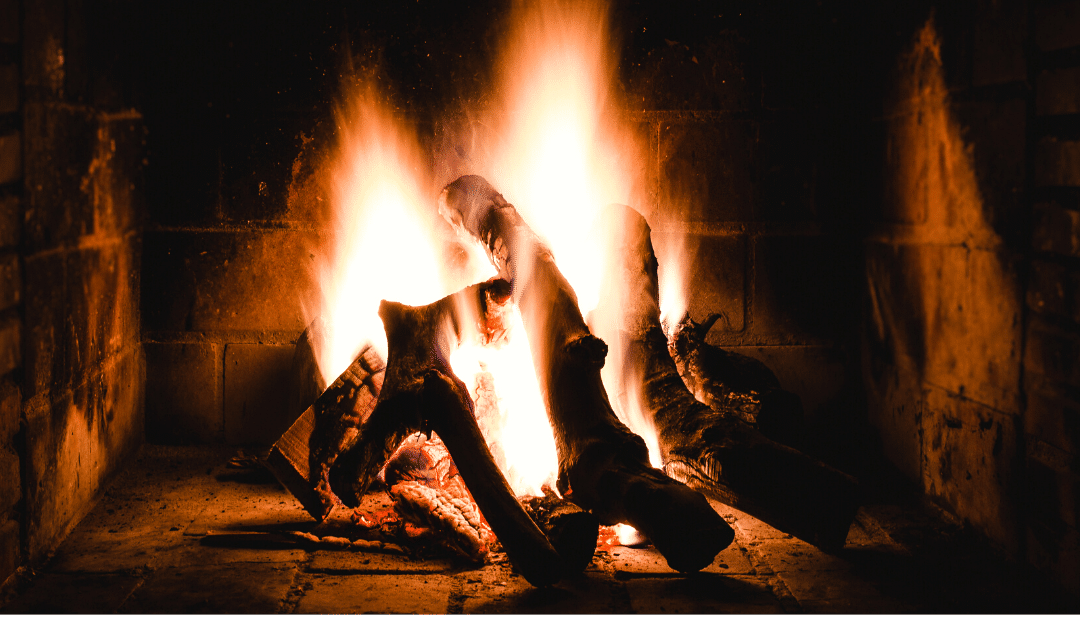
by California Casualty | Good to Know, Homeowners Insurance Info |
Reducing your home energy usage is good for several reasons. First and foremost, it keeps money in your pocket. But it also lightens the load on local power grids and the environment — a win-win all around.
Try some or all of the 12 steps below to save on your energy bill while staying cozy and comfortable in your home. They’re easier than you think!
1.Let the Light Shine In
Use the sun’s heat (bonus: it’s free!) to your advantage! Open curtains and blinds on your south-facing windows during the day to let the heat in and then close them at sunset to keep it in.
2. Leak-Proof Your Home
Inspect your home for leaks (get tips from energy.gov on detecting air leaks here). Often invisible, leaks can wreak havoc on your energy bill. Use weather stripping and caulking to seal leaks and keep warm air inside. While you’re at it, insulate your ducts, which can be a significant source of heat loss. For windows that you rarely use during winter, get plastic window kits to further leak-proof.
3. Bump the Temp Down
Just by setting your thermostat a few degrees lower, you can immediately begin saving. Consider installing a programmable thermostat for even more time- and energy-efficiency.
4. Pay Attention to Your Water Heater
Water heaters account for about 17 percent of a home’s energy use – adding up to about $400-600 per year for the average household. Bring that down by:
-
- using less hot water
- setting your water heater’s thermostat to 120 degrees F.
- buying an energy star model when it comes time to replace it
- fixing leaks
- washing clothes in cold water
- installing low-flow showerheads and faucets
5. Check the Fireplace
When not burning a fire, keep the damper closed. Consider installing tempered glass doors and an air exchange system that blows warm air back into the room. Check the seal on the flue damper and make sure it’s tightly sealed. Finally, add caulking around the hearth. If you never use your fireplace, plug and seal the flue.
6. Maintain Your Heating System
Have a professional check and tune-up your heat pump or furnace once a year. This could lead to big savings. Make sure they also replace any clogged filters, which can make your furnace work harder, thereby raising energy costs (you can also check and replace filters yourself).
7. Close Unused Vents
In rooms that are rarely used, fully or partially close the vents to redirect heat to other rooms.
8. Use Ceiling Fans
Everyone knows heat rises, which means the air you’ve paid to heat rises and collects at the tops of rooms. This can be especially costly in homes that have high ceilings. Use your ceiling fans to push warm air downward – just make sure they’re set to run in a clockwise direction.
9. Check Your Insulation
If your attic doesn’t have at least 11 inches of insulation, you’ll most likely lose heat through the upper level of your home.
10. Recycle That Hot Air
After cooking, leave the oven door open a crack to let the heat help warm the house. Bonus? You get to savor the delicious smell of those cookies, baked goods, or dinner a little longer.
11. Space Heaters
Portable heaters are a good cost-saving option if you and your family are hanging out in one room for any length of time, or if you’re the only one home and are stationary (like working in a home office). But remember to use caution whenever using space heaters – according to the Consumer Product Safety Commission, these heaters cause more than 25,000 residential fires per year. Follow the heater instructions carefully and always unplug them when not in use.
12. Bundle Up
Sweaters, socks, and cozy blankets really do make a difference.
By making a few tweaks in your home and modifying some behaviors, you’ll begin to see cost and energy savings in no time.
And as we transition from winter to spring and summer, check out our companion piece on lowering your cooling costs.
This article is furnished by California Casualty, providing auto and home insurance to educators, law enforcement officers, firefighters, and nurses. Get a quote at 1.866.704.8614 or www.calcas.com.
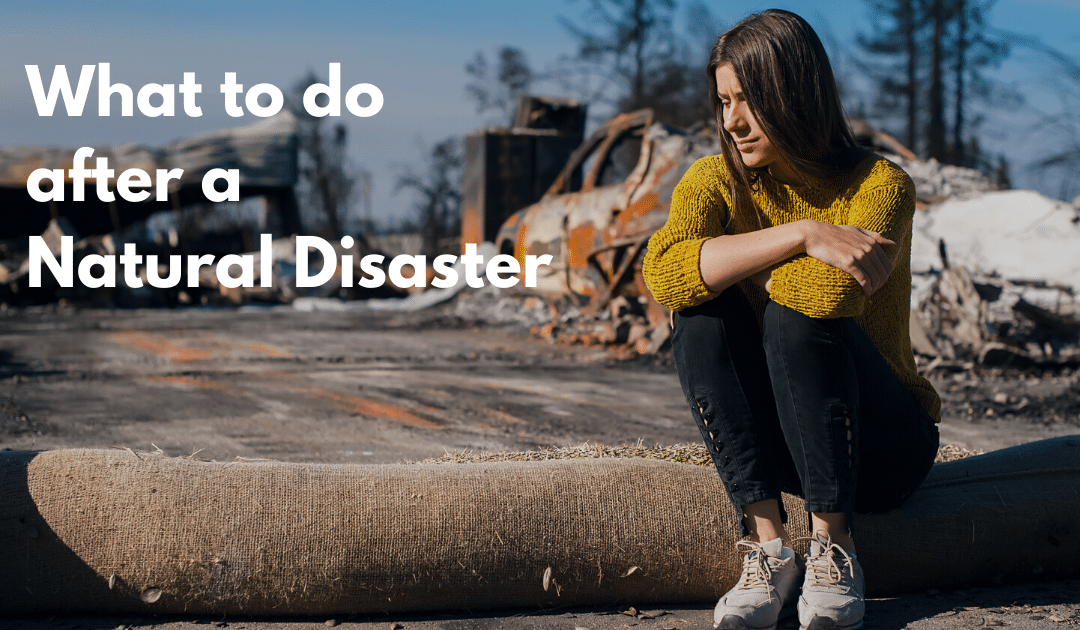
by California Casualty | Good to Know |
Whether it’s a flood, tornado, hurricane or earthquake, a natural disaster can turn your world upside down in a matter of seconds. Besides stress, adrenaline, and fear, there may be injuries to deal with and damage or loss of property. Many people don’t know what to do in the wake of a disaster, which can hinder their coping efforts and recovery.
Here’s a list of the 6 main steps to take immediately following a natural disaster and in the days, weeks, and months that follow.
- Deal with the Immediate Aftermath
-
-
- Make sure all household members are accounted for. If anyone is missing, seek help from first responders.
- Attend to physical injuries or emotional distress. In cases of serious injury, summon professional help.
- If you and your family need to evacuate, follow your family’s evacuation plan, grabbing emergency kits, go bags, and essentials as assigned.
- Notify family and friends that you’re safe. If you can’t connect directly, you can register with FEMA’s emergency family locator online or by calling 1-800-588-9822. See more FCC & FEMA communication tips here.
- Be aware of any new safety issues created by the disaster, such as damaged roads/bridges, chemical spills, downed power lines, and washed-out roads. Inform local authorities if possible.
- Find Temporary Shelter or Housing
-
-
- If your home is damaged and rendered uninhabitable, take photos of the damage, remove any valuables you can, and secure the property. Call your insurance company as soon as you’re able.
- If you need to find an open emergency shelter near you right away, you can text SHELTER and your 5-digit zip code to 4FEMA. You can also use the FEMA Mobile App.
- gov also has shelter resources online.
- If you need to secure a hotel or other short-term housing, check FEMA’s resources for interim housing.
- Remember that COVID-19 safety and health precautions may still be in effect so be sure to protect yourself and your family and stay informed on general guidelines.
- If you have a pet, be sure to ask all sheltering or housing inquiries if pets are allowed.
- Keep all your receipts from temporary housing costs, as you can most likely submit them for reimbursement.
- Emergency Food and Water
-
-
- Listen to local radio or television to find disaster feeding sites.
- Check with local agencies, emergency shelters, and food banks for food assistance.
- If you have to boil or otherwise disinfect water, follow the proper guidelines.
- Seek Disaster Assistance
-
-
- Check local radio and media for information on housing, food, first aid, clothing, and financial assistance.
- The American Red Cross, Salvation Army, and other volunteer organizations also provide assistance, supplies and help with clean-up efforts.
- FEMA helps homeowners and renters who have lost their homes as a result of a presidentially-declared disaster. Assistance includes temporary housing, counseling, low-interest loans and grants, and other assistance. Register at gov or call 1-800-621-FEMA. You’ll need your:
-
- social security number
- telephone number
- insurance information, address (location of damaged home and current address)
- total household annual income
- routing and account number for bank account
- a description of damage and losses
- Returning Home
-
-
- Wait until your area is declared safe.
- If returning at night, use a flashlight to inspect your home and property. Keep an eye out for animals, including dangerous ones such as venomous snakes.
- Inspect the property and perimeter first, checking for hazards such as gas leaks, downed power lines, and structural damage. Do not enter if you smell gas, see floodwaters, or if there’s fire damage.
- If you do enter your home, you’ll need to be extremely cautious. Follow the dos and don’ts of inspecting your home in FEMA’s guide here.
- Replacing Lost Records & Protecting Your Property
-
-
- Ideally, your important records and financial documents were part of your emergency kit.
- If you need to replace records such as birth certificates, driver’s licenses, marriage certificates or social security cards, follow the instructions at USA.gov here.
- Contact your creditors to inform them of the situation and work with them for current and ongoing payments.
- If the disaster is a declared Federal disaster, you may be eligible for federal income tax deductions. Check with your tax planner.
- If a member of your family is injured and you’re caring for them, check with your employer to see if you’re eligible for the Family Medical Leave Act or disability benefits.
While checklists and logistical aspects all need to be dealt with, also keep in mind the mental toll that natural disasters exert. Seek help if you can, take breaks and walks, and practice self-care. Remember that children are especially affected. Community and support networks are especially important in times like these — lean on them when you need support, and offer help to others when you have some extra energy to give.
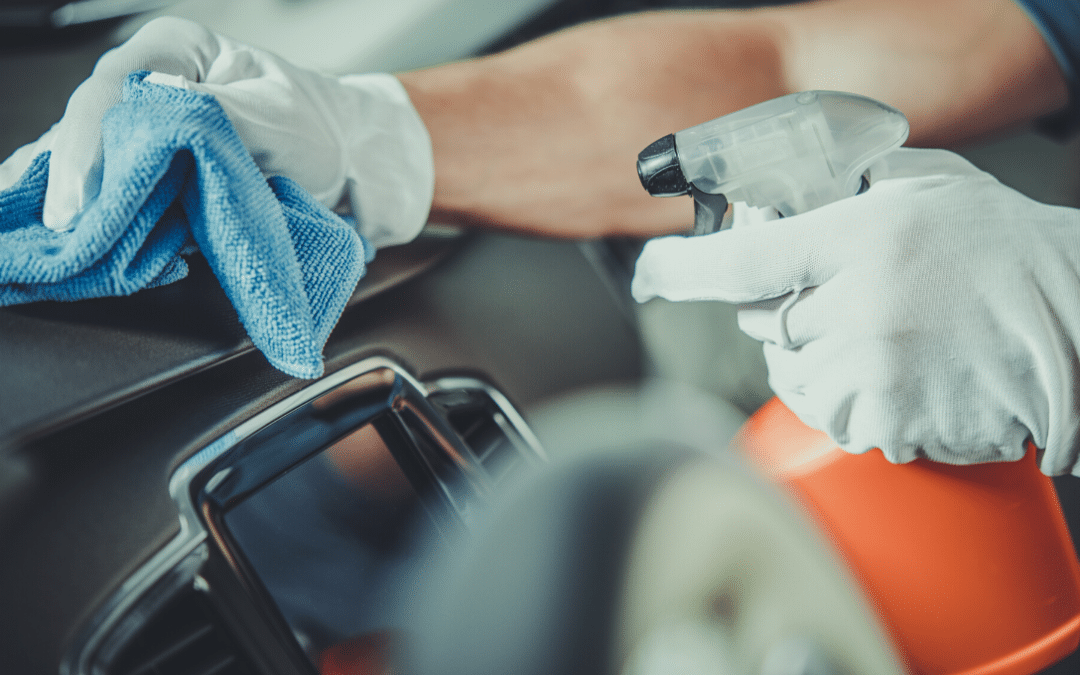
by California Casualty | Auto Insurance Info, Good to Know |
As the nation begins to open its doors and more people get back on the road, it’s important — now more than ever — to make safety your number one priority. Not only following all of the traffic laws, but also making sure your vehicle is clean and free of any harmful bacteria or viruses, like coronavirus.
Routine vehicle cleaning and disinfecting will ensure the safety of you and your passengers. So, whether it’s a few trips to the grocery store, getting a much-needed haircut, or returning to the office, as we head into our “new normal,” remember to consistently clean and disinfect your vehicle to help you stay healthy and safe.
Items You’ll Need
-
- Disposable gloves
- A bucket of warm water
- Soap (preferably anti-bacterial)
- Microfiber cloths
- Disinfectant wipes (if available)
- A portable vacuum
Cleaning Your Vehicle
Before you start, make sure to suit up in gloves and a facemask, as well as clothes that can be washed as soon as you’re done.
Next, thoroughly clean the most high-touched areas. These include:
-
- Steering wheel
- Gear shift
- Turn signal/wiper lever
- Navigation screen
- Door handles (inside and outside)
- Dashboard
- Heating/cooling controls and vents
- Radio dials
- Seats and armrests
- Seatbelts and latches
- Mirrors
- Locking/window controls
And don’t forget other places that you or someone else has touched, such as the seat adjustment controls, grab handles and cup holders.
Just as with washing your hands, you’ll need to (gently) scrub for at least 20 seconds to break down the virus. Disinfectant wipes and other automotive cleaning solutions are your best option for surfaces. If those are not available, use warm, soapy water and dry with a microfiber cloth.
For your seats, leather or upholstery, you can use disinfectant wipes, upholstery cleaner, or a small amount of warm, soapy water. To avoid damage, make sure you aren’t using too much water or scrubbing too aggressively. After washing leather seats, apply a leather conditioner/restorer to keep them from cracking, and let dry. When using any alcohol-based disinfectants, make sure they contain at least 70 percent alcohol.
Finally, make sure to regularly shake out and vacuum your floorboards and mats. These are frequently touched, yet overlooked areas of vehicles that have the potential to carry harmful germs from the bottoms of shoes.
DO NOT USE bleach, hydrogen peroxide, or any ammonia-based cleaning products in your vehicle.
Safely Riding with Passengers
It is always a good idea to keep safety and disinfectant items in your car, especially if you are transporting others. These include:
-
- Sanitizer (at least 70% alcohol)
- Disinfectant Wipes
- PPE – gloves and face coverings like masks, bandanas, or scarves.
When you are riding with others or using a rideshare service, it may be impossible to maintain the CDC recommended social distance guidelines. So, when in a car with others, consider wearing your mask and roll down or crack a window. It’s important to let fresh air in because ventilation in cars is usually poor.
If you are riding with someone who is infected but asymptomatic, coronavirus particles can build up inside the cabin, increasing your chances of contracting the virus. Cracking a window will help disperse the particles and decrease your chances of infection.
How California Casualty is Keeping Vehicles Clean
Customer safety and satisfaction is our main priority. That is why California Casualty partners with Enterprise to handle the vehicle rental needs of our customers during the claims process.
All vehicles rented from Enterprise carry the Complete Clean Pledge – to follow best practices recommended by leading health authorities to ensure your safety. In addition to vacuuming and wipe-down cleaning, between every rental, Enterprise uses a disinfectant to sanitize key areas throughout the entire vehicle. View them here.
For more information on the Complete Clean Pledge and all that Enterprise is doing to help keep our customers safe, please visit their website at https://www.enterprise.com/en/car-rental/on-call-for-all.html
This article is furnished by California Casualty, providing auto and home insurance to educators, law enforcement officers, firefighters, and nurses. Get a quote at 1.866.704.8614 or www.calcas.com.

by California Casualty | Calcas Connection, Good to Know |
While winter weather has been lingering for a couple of months, there’s still more to come. Did you know that heavy rains, blizzards, and ice storms often arrive in February and March across many parts of the country?
Here are a few life-saving tips to remember as you get on the road this season.
- Remove bulky coats/jackets when buckling children into car safety seats.
In an accident, the material will squish down and the harnessing system will be too loose to be effective. Layer blankets on your child’s lap after buckling them in.
A list of recommended warm clothing that won’t interfere with car seat safety can be found here.
- Keep your gas tank at least half full.
This prevents water condensation from getting into and freezing up fuel lines. A frozen fuel line means limited gas supply to the engine, stopping you in your tracks.
- Use wiper fluid that is formulated to NOT freeze.
Windshields coated with ice or splashback from roads create dangerous visibility. You will need to clean your windshield while driving, and only fluid that stays liquid will do the job.
Experts recommend carrying tire chains, jumper cables, a shovel, ice scraper, and even spare wiper blades. Other life-saving items include bottles of water, high-calorie foods and snacks, blankets or sleeping bags, a spare pair of boots, flashlights, gloves, solar cell phone chargers, and a first aid kit. Kitty litter for traction is also a good idea.
- Be aware of deadly carbon monoxide in your vehicle(s).
If you can smell exhaust in your vehicle’s cabin, you should have your systems checked. Leaks in exhaust systems, defective ventilation systems, and even an unsecured back hatch or partially open trunk can allow carbon monoxide gas into your vehicle. Tailpipes blocked with snow or ice can send carbon monoxide into the vehicle too.
Also, warming a car in a garage, even with the door open, allows dangerous concentrations of the gas into the vehicle and even into your home.
It’s important that everyone knows the symptoms of carbon monoxide poisoning.
- Bring essential medications in case you get stranded.
- Don’t venture out in extreme conditions unless it’s an emergency.
You are not only putting your life in danger, but also the lives of first responders who will have to venture out to search for you if you get lost or stranded.
TAKEAWAY: Find more winter driving tips and preparation at the California Casualty blog.
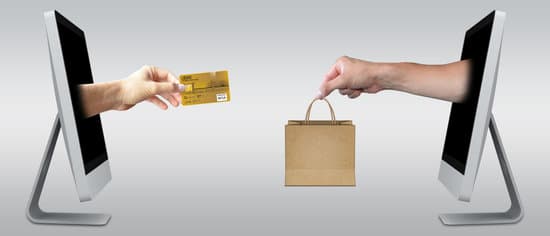
by California Casualty | Calcas Connection, Good to Know |
Many of us will be using smartphones and laptops for our holiday shopping. While it may be more convenient than a drive to the mall, going online presents dangers to your credit and personal data. Cyber-crooks are lurking, just waiting for a slip-up to steal your identity and get into your bank and credit card accounts. As you tap in and surf for deals, be cautious about where you go and the information you give others. It’s estimated that one-in-five Americans have been a victim of identity theft, and 43% of those had their identity stolen while shopping online during the holidays.
Be Secure
It’s more important than ever that you protect your personal information. Here are some important internet shopping safety tips to remember:
-
- Don’t open suspicious or unsolicited emails that can often take you to dangerous sites
- Shop with familiar companies, looking for the secure “https” in the URL (“S” indicating it is a secure site), and beware of copycat sites with slight misspellings
- Use strong, unique passwords for online accounts
- Avoid using debit cards and pay with a credit card for online shopping (credit cards offer the most fraud protection)
- Refrain from shopping or banking while using free or public Wi-Fi
- Be aware of fake charity, pet adoption and lonely-hearts solicitations
- Check your credit card, bank and other accounts often for suspicious or fraudulent charges
- Never send a gift card for payment (a trick many crooks use)
If you are planning on giving to a charity, you also need to take your time and do research to make sure your donation goes to a good cause. Scammers know that people’s good hearts make them easy targets for rip-offs. Remember to:
-
- Be skeptical of email solicitations from charities you have never heard of or supported before
- Avoid giving to any organization requesting gift cards, wiring money, or transferring funds to an overseas bank
- Realize that many social media donation sites may not be legitimate
- Seek out each charity’s authorized website (crooks often use sound-a-like sites and misspellings)
- Check the legitimacy of charities through sites such as the Better Business Bureau, Charity Navigator and GuideStar
Resolution
If you suspect that you have been an ID theft victim, the Federal Trade Commission recommends:
-
- Placing a freeze on your credit report (locking down your credit to anyone)
- Placing a fraud alert (protecting your credit from unverified sources) with one of the three nationwide credit bureaus (Experian, Equifax and TransUnion)
- Filing a complaint with the Federal Trade Commission
Find more ID theft protection information https://mycalcas.com/?s=cyber+crooks.
TAKEAWAY:
One of the many benefits that California Casualty offers with every auto and home/renters policy is free ID theft resolution services from CyberScout. Learn more at www.calcas.com/identity-theft or call 1.800.800.9410, option 3 to learn more.
Read Next:
How We’re Listening and Learning From You
Here’s Free Help If You’re A Victim Of ID Theft
We’ve Got The Heat To Help, And Love Giving Back






